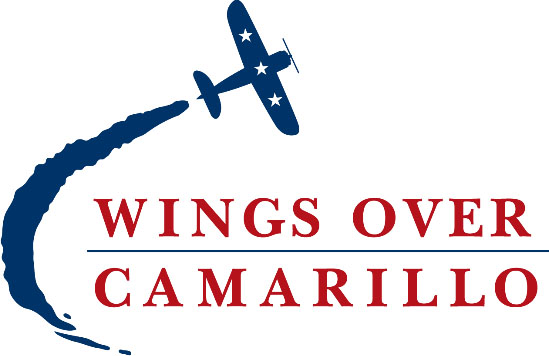Behind every war story, every fight for freedom and the world’s safety, are heroes who gave their lives to the cause. So, no war story can be told without the survivors who risked their lives for our country. The Vietnam war lasted for two decades, and within that period, thousands of American pilots dedicated their lives to fighting, rescuing injured soldiers, and providing air support. These Vietnam war veterans deserve to be honored for their selfless service to the country and the world.
After over 40 years, the Vietnam veterans are and will still be recognized as the heroes of the Vietnam war, and Wings Over Camarillo is not left out in honoring them. At every annual airshow, we showcase military aircraft and veterans. A tent is also dedicated to war veterans so they can share their experiences with guests.
The Vietnam War
The Vietnam war, or the second Indochina war, was a conflict between North Vietnam and South Vietnam. The war was fought in Vietnam, Cambodia, and Laos from November 1955 to April 1975. North Vietnam had received support from the Soviet Union, China, and other communist allies, while South Vietnam received support from the US and other anti-communist allies.
The Tet Offensive in 1968, organized by North Vietnam, caused conflict among the South Vietnamese population. It also sparked protests in the US against the war because civilians were the primary victims. The war continued for two decades and was amplified by the cold war between the United States and the Soviet Union.
In 1969, the policy of Vietnamization was introduced after Richard Nixon was elected president of the United States. The US had largely withdrawn its ground forces and mainly operated in the air. By 1973, the United States forces had been withdrawn after the Paris Peace Accord, which was a failure. The war continued for two years, and in April 1975, the North won with the North, and the South reunified as the Socialist Republic of Vietnam.
Vietnam War Pilots
The Vietnam war featured aerial attacks with helicopters and skilled pilots. Crew members played a significant role in the war. The war has even been described as America’s ‘Helicopter War’ because helicopters provided support such as troop transport, air support, medical evacuation, and search and rescue missions.
Pilots became more involved in the war after the US withdrew most of its ground forces during the Vietnamization operation. Over 100,000 pilots and crew members served during the war; sadly, about 5,000 were killed. Surviving and fallen heroes have been recognized for their selfless service during the war. In August 2015, a memorial tree was dedicated to honoring the helicopter pilots and crew members. In April 2018, a monument was erected in Arlington cemetery, where over 300 pilots and crew were buried.
How Wings Over Camarillo Honors Vietnam War Veterans
Wings Over Camarillo air show that takes place every year between August 20 and 21 is not just an air show performance. Wings Over Camarillo has ties with military nonprofits and usually showcases military aircraft and veterans at air shows.
To honor Vietnam veterans, the 37th Wings Over Camarillo show in 2017 was dedicated to honoring Vietnam veterans. However, Wings Over Camarillo’s annual airshow always features a Veteran’s tent hangar where guests can visit veterans who want to share their first-hand war experiences.
You can honor our veterans before national Vietnam Veterans day on March 29. You can do it twice a year through our air show. The veteran’s tent offers an opportunity to share a part in vital world history by listening to real stories from the war. It is also an avenue to learn about the Vietnam war and hear directly from eyewitnesses, listen to their personal war stories, and spend time with our war heroes.
Wing Over Camarillo’s Veteran’s tent hangar is open to people of every age who want to listen to war stories. It’s an opportunity to honor Veterans we are indebted to for their courage and selfless service.
How to Support Vietnam War Veterans During the Airshow
Listen to Their Stories
Veterans are always happy to share their stories and first-hand experiences. So, listen to them and ask questions about the war. It promises to be an exciting experience for you. For our Vietnam war veterans, sharing their stories helps them feel that their service and sacrifices during the war were not in vain.
Take Photographs
It would be best to keep your camera on when coming for the Wings Over Camarillo airshow. Many memories will be worth keeping, like the moments spent with our war veterans. You can take pictures with them and with friends to remember this remarkable event. Keeping a photograph of our Vietnam war heroes is a great way to honor and support them.
Create a Personalized Video
You can also put your photos to music and add messages by creating a personalized video. You can share your video with family and friends to honor our Veterans. You can create a Thank A Vet video with the help of DAV (Disabled American Veterans). You can also create videos to share their stories with the world.
Buy A Book
Veterans sell their books in the tent hangar, and you can buy a copy or more to support and honor them. Reading their books will help you get a more in-depth war story. You can also get copies for your family and friends and spread the story of our war heroes who risked their lives for the world’s safety.
The Impact of Vietnam War Veterans
The veteran’s tent hangar is where guests of the Wings Over Camarillo airshow can meet real-life war heroes like the Vietnam veterans and listen to their first-hand war stories. The Veteran tent’s hangar is our way of honoring our war heroes. We implore you to visit the hangar after enjoying the air and ground performances at our annual airshow.
